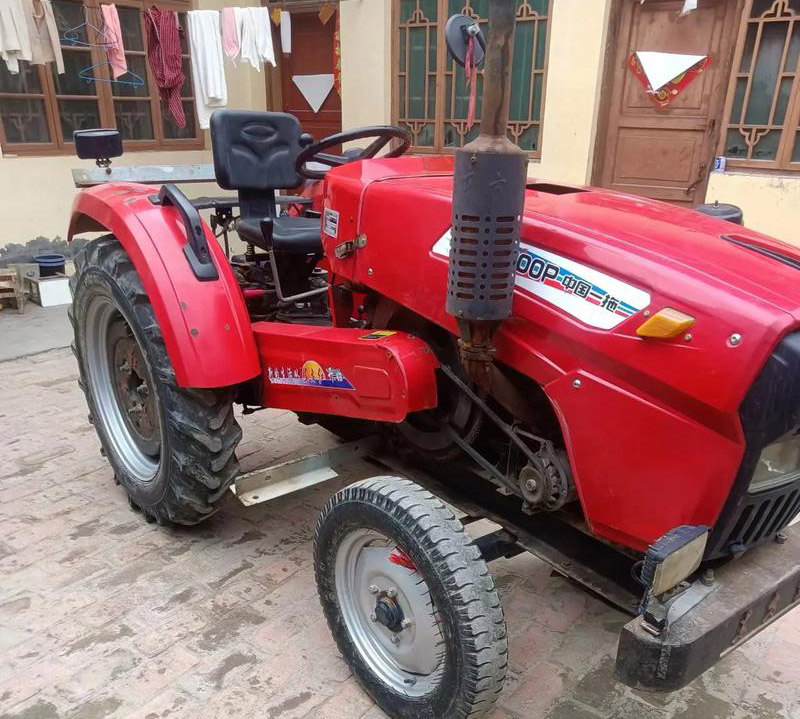Why Are Small Agricultural Machines Gaining Popularity in the Southeast Asian Market?
In recent years, the demand for small agricultural machines has been rapidly growing in Southeast Asia. Countries such as Vietnam, Thailand, Indonesia, and the Philippines are experiencing a steady rise in mechanized farming, yet the preference is not for large tractors or heavy machinery but for compact, versatile, and affordable farm equipment. This trend reflects the unique agricultural landscape, socio-economic conditions, and farming practices of the region. For Chinese manufacturers aiming to expand globally, Southeast Asia presents a promising and strategic market.
1. The Agricultural Landscape in Southeast Asia
Southeast Asia is one of the most fertile regions in the world, known for rice paddies, fruit orchards, and diversified small-scale farming. Unlike large-scale farms in North America or Europe, most agricultural land in this region consists of smallholder farms, typically ranging from 0.5 to 3 hectares. These fragmented plots make it difficult to operate large, heavy machines, creating a strong demand for compact, flexible, and affordable solutions.
Another key factor is labor shortages. As more rural workers migrate to cities for better jobs, farm owners struggle to find enough manpower. Small agricultural machines fill this gap by reducing reliance on manual labor while keeping costs manageable.
2. Why Small Agricultural Machines Are in Demand
Compact Design for Small Farms: Large tractors are often unsuitable for narrow rice paddies or hilly terrains. Mini tillers, walk-behind tractors, and hand-held harvesters are easy to maneuver and fit well in tight spaces.
Affordability and Accessibility: Compared to high-cost imported machines from Western brands, small agricultural equipment made in China offers a balance between price and performance. Farmers in Southeast Asia, many of whom have limited budgets, find such equipment more accessible.
Fuel and Energy Efficiency: Small engines consume less fuel, lowering operational costs. In remote rural areas, where fuel supply can be inconsistent, efficiency is crucial.
Multi-Functionality: Many mini farm machines can perform multiple tasks—tilling, planting, fertilizing, and harvesting—by changing attachments. This versatility appeals to smallholder farmers who cannot afford separate machines for every task.
Ease of Maintenance: Local repair shops can easily maintain compact machines. Replacement parts are affordable and widely available, especially for Chinese-manufactured products.
3. Key Applications of Small Agricultural Equipment
Rice Cultivation: Mini tillers and portable harvesters are ideal for wet paddies.
Vegetable Farming: Lightweight machines improve efficiency for greenhouse and open-field planting.
Fruit Orchards: Compact tractors can navigate between closely planted trees.
Livestock Feed Production: Small grinders and choppers help prepare feed at lower costs.
Cash Crops: From sugarcane to coffee, multi-functional equipment is widely adopted.

4. Regional Insights
Vietnam: Strong demand for rice cultivation machinery, especially compact harvesters.
Indonesia: Archipelagic geography makes portable, easy-to-transport machines essential.
Thailand: Known as the “kitchen of the world,” demand spans from rice to horticulture.
Philippines: Government subsidies encourage mechanization, boosting imports of affordable equipment.
5. Frequently Asked Questions (FAQ)
Q1: Why don’t Southeast Asian farmers prefer large tractors?
A1: Most farms are small and fragmented, making large machines impractical. Compact equipment is easier to maneuver and more cost-effective.
Q2: How long can small agricultural machines last?
A2: With proper maintenance, high-quality mini farm equipment can last 8–10 years, offering reliable service for smallholder farmers.
Q3: Are spare parts easy to find in rural areas?
A3: Yes. Chinese manufacturers often establish distribution networks across Southeast Asia, ensuring parts availability and local service support.
Q4: Are small machines environmentally friendly?
A4: Compared to large fuel-hungry tractors, compact machines consume less fuel, reducing emissions and minimizing soil compaction.
Q5: Can small machines handle different crops?
A5: Absolutely. Many are designed with interchangeable attachments, making them versatile for rice, vegetables, fruit, and cash crops.
6. The Role of Chinese Manufacturers
China has become a leading exporter of mini farm equipment, supplying everything from small tillers to hand-held harvesters. Compared to Western products, Chinese machines are more affordable without compromising quality, adaptable to Southeast Asian farming conditions, easily customizable with options for engine size and attachments, and widely distributed thanks to strong logistics networks and partnerships.
For buyers in Southeast Asia, this means quick access to reliable machines that suit their budgets. For Chinese exporters, it represents a growing opportunity to strengthen trade ties with neighboring countries.
7. Market Trends and Future Prospects
The adoption of small agricultural machines in Southeast Asia will continue to accelerate due to government support, climate challenges, rising demand for food, and the integration of smart technology like GPS and sensors to further improve farming efficiency.
8. Conclusion
The Southeast Asian market’s preference for small agricultural machines is not a passing trend but a long-term shift. Driven by fragmented land, labor shortages, affordability needs, and government policies, compact farm equipment is transforming agriculture in the region. For Chinese manufacturers, this is an opportunity to strengthen exports by delivering high-quality, affordable, and adaptable products tailored to local farming conditions.
In the years to come, small agricultural machines will continue to play a vital role in making farming more productive, sustainable, and accessible to millions of farmers across Southeast Asia.
5. Get Your Personalized Solution Now
→ Call the selection hotline: +86 158 5359 8030 (also supports accessory customization inquiries).








